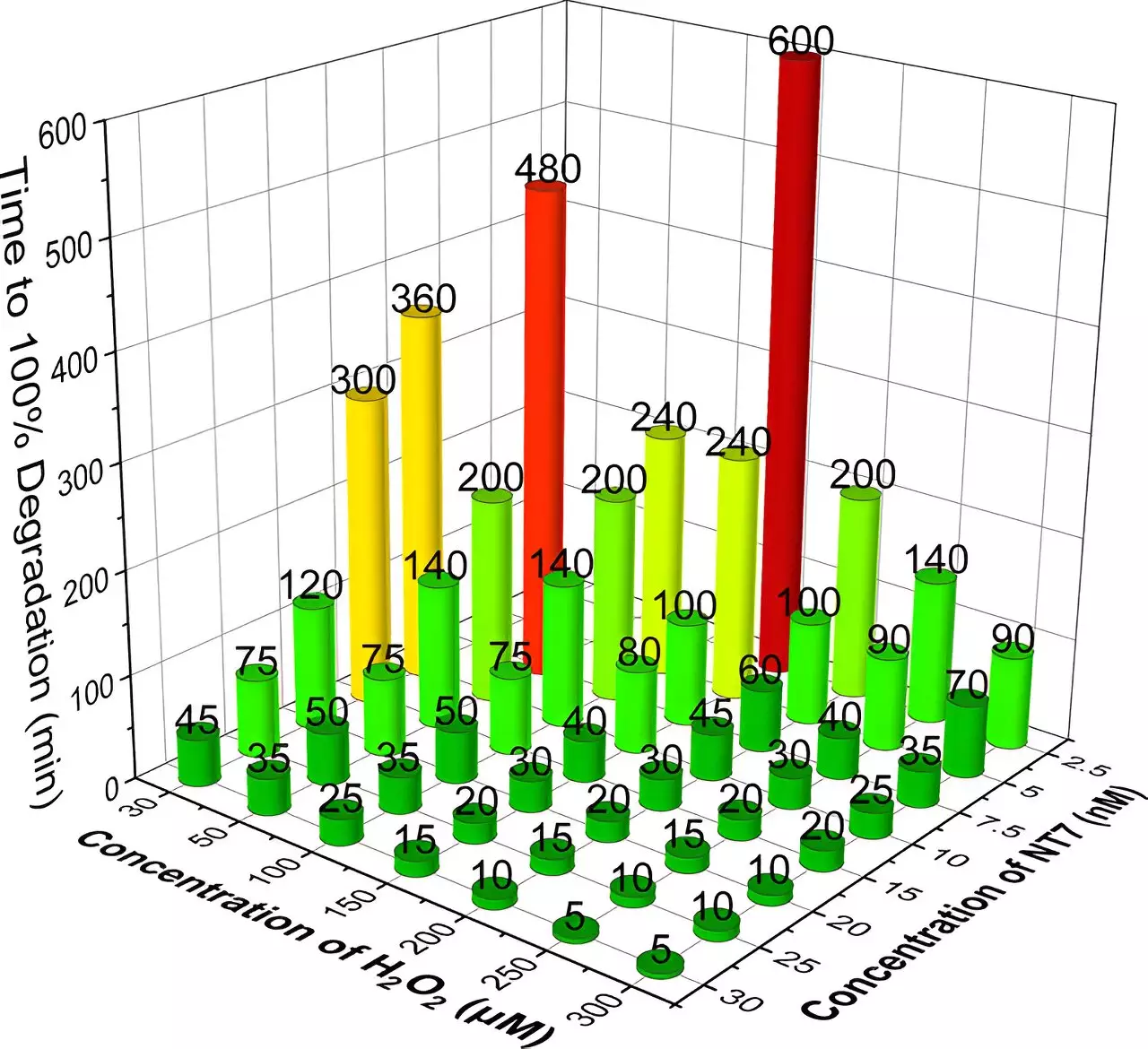Water pollution poses significant global challenges, particularly from pharmaceuticals and personal care products. With several prescription drugs finding their way into municipal wastewater systems, the contaminants often escape conventional treatment methods, leading to adverse effects on wildlife and ecosystems. Recent research from Carnegie Mellon University has introduced an environmentally friendly solution to tackle the pressing issue of drug contamination in water bodies. Scientists have developed a technique utilizing TAML (Tetra Amido Macrocyclic Ligand) catalysts in conjunction with hydrogen peroxide, showcasing high efficacy in degrading commonly found antibiotics and other pharmaceuticals across various water systems.
The Role of TAML Catalysts in Water Purification
Historically, treatment methods to address micropollutants have had limitations, especially as public water systems face rising contamination levels. TAML catalysts, particularly a new iteration dubbed NewTAML, demonstrate a groundbreaking approach to purify water by activating hydrogen peroxide at incredibly low concentrations. This innovative method not only promises effectiveness but is also designed to be safe and cost-efficient, aiming to provide a feasible solution to inadvertently reintroduced pollutants in our waterways.
According to Terry Collins, a key figure in the research and Director of the Institute for Green Science at Carnegie Mellon, the simplicity of the method could revolutionize water treatment processes. The process essentially involves mixing ultra-dilute solutions of TAML with hydrogen peroxide, initiating a reactions that target the active pharmaceutical ingredients in contaminated waters until they are undetectable.
The researchers conducted extensive tests on NewTAML’s effectiveness, evaluating its capability to degrade a selection of high-concern pharmaceuticals, including popular antibiotics. Utilizing laboratory conditions initially, the team then piloted the response of the system in real-world scenarios involving municipal secondary wastewater, river water, and lake water.
In tests where drugs were deliberately spiked into these water sources, the results were remarkable. The NewTAML catalyst, when combined with a dilute hydrogen peroxide solution, led to a significant reduction in active compounds. In just a matter of hours, five out of six tested drugs became undetectable, with ciprofloxacin, a prominent antibiotic, experiencing a degradation rate of over 95%.
This finding not only highlights the potential effectiveness of the TAML/peroxide method in laboratory settings but also indicates possible real-world applications in tackling the extensive contamination of water sources from various pharmaceuticals.
The economic feasibility of implementing TAML catalysts for wastewater treatment holds immense potential. Traditional methods, which often involve expensive equipment and complicated processes, have hindered broader adoption, especially in less affluent regions. In contrast, one of the significant advantages of the TAML approach is its low operational cost and reduced chemical consumption. By leveraging affordable, low-concentration catalysts, water treatment facilities, particularly in smaller municipalities, can effectively manage pharmaceutical contaminants without incurring prohibitive costs.
Furthermore, Collins expressed optimism that the ease of application associated with TAML/peroxide systems would facilitate their adoption in both urban environments and natural water systems. This straightforward technique, requiring minimal time and technical involvement, opens the door to widespread use in various ecological and industrial contexts.
Next Steps and Future Prospects
Current developments indicate a promising future as Collins, along with his research team, looks to further refine their findings through field testing in various locations. With patents on their advanced TAML variations secured and licensed to Sudoc, a startup focused on commercializing these technologies, efforts are actively underway to introduce this innovative solution to the European water treatment market. Sudoc has recently garnered substantial funding to advance the rollout of TAML-based systems, a testament to the growing recognition of the need for robust wastewater treatment alternatives.
The alarming prevalence of pharmaceutical pollutants in water supplies raises significant public health and environmental concerns. The innovative research conducted by Carnegie Mellon University offers a practical and effective strategy for tackling this pressing issue. By utilizing readily available materials and simple application procedures, TAML catalysts represent a breakthrough in water purification technologies. As research progresses and implementation strategies evolve, the hope is to see broader adoption of this environmentally friendly method, ultimately leading to cleaner and safer water resources for all.


Leave a Reply